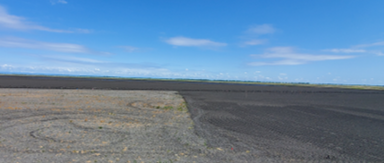Last year roughly half of the rice acreage was left fallow. We have been conducting research (funded by the Rice Research Board) looking at the differences between rice grown after a fallow versus rice grown following rice. We have found that rice following a fallow has higher yield potential. In our two years of study we saw about a 2 to 3 sack yield advantage in rice after a fallow. Higher yields may be due to reduced disease incidence. In both years of the study we saw lower incidence of stem rot in rice following a fallow year. As mentioned, this can lead to higher yields but also to less lodging.
Regarding nitrogen management, we used a labeled nitrogen fertilizer to allow us to determine if the nitrogen in the plant came from fertilizer or from the soil. We found that fertilizer N was used similarly when rice followed a fallow or when it followed rice. Interestingly, we also found that when rice followed fallow, more nitrogen was available from the soil – particularly after PI. This has a couple of implications. First, it means if you had a fallow rice field last year, you may be able to back off on your overall N rate. In our data from one year, we found that you could back off by up 20 to 30 lb N/ac. Secondly, most of the additional N availability came after PI. This suggests that if you are routinely topdressing, it may not be necessary when rice is following a fallow year. Regardless, I would still suggest monitoring the crop at PI using a Leaf Color Chart or a GreenSeeker to make a more informed decision about N management.
Some of you may be asking “why do we get more nitrogen in a field that was fallowed?”. This is a great question. In fields that have been in rice where the rice straw is incorporated and flooded during the winter, phenols accumulate. Phenols are an organic compound that tend to build up when organic matter, such as straw, decomposes under anaerobic conditions. Given how most farmers manage their straw we would expect a build up of phenols. In fact, we have looked at soils around the valley and have found this to be the case. Phenols also bind nitrogen, making it unavailable for plants. Imposing long periods of time when the soil is aerobic such as during a fallow period, promotes the breakdown of these phenols and the release of nitrogen.
